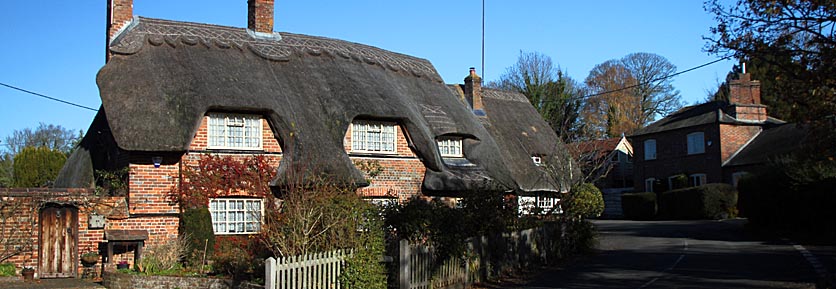 |
 |
|||
|
|
Boxford's history stretches way back to Iron Age times, if not before. Borough Hill Camp, just north-east of the village is a small hillfort, now barely visible, that was probably occupied in the Iron Age. Two Roman buildings have been discovered in the parish, and there are surface indications of a third. One was certainly a villa. The status of the others is unknown. When the Saxons settled in this area, they called the place Boxora meaning 'Box shore' [ie. Box tree covered river bank]. So it should really be called Boxor today (like Windsor), but the suffix was corrupted to -ford in the 16th century, presumably because one crossed the River Lambourn there. The parish church is one of the earliest in the county and has Saxon ‘long-and-short’ work still remaining in the chancel quoins, but its great treasure is its wooden shuttered Saxon window, the oldest working window in the country. It was only discovered beneath Victorian rendering in 2010. The village is supposed to have been granted to Abingdon Abbey by King Cadwalla of Wessex in the 680s. At the time of the Domesday Survey of 1086, it was still owned by this monastery, but it is hard to tell its size because it was lumped in with the adjoining manor of Welford. However, by the 1180s, the village was certainly quite sizeable, with twelve tenant farmers, sixty-five cottage-dwellers and twenty-six unspecified 'others' and their families. The Abbot had a reeve run the estate and, later in the medieval period, it was leased out, in return for military service, to the Sunningwell family from the place of the same name. It became part of the Parry estate after the Dissolution of the Monasteries. There is no manor house today. Boxford House is an extraordinary Tudor-Gothic Revival mansion built as the rectory for the Rev. John Wells in 1825. There was a corn mill in Boxford by the 12th century. There is still an 18th century mill on the same site. It has always been very picturesque, but is sadly now obscured by a high beech hedge. There was a skirmish at the adjoining bridge (then a ford) when, before the Second Battle of Newbury in October 1644, the Roundheads marched north around the town to reach Speen, in the west, whilst avoiding the guns of Donnington Castle. Also nearby is Brook Cottage, one time home of the famous 'Boxford Wizard,' John Palmer, to whom people flocked in the early 19th century for spells, prophecies and other advice. The parish is sometimes known as Boxford-cum-Westbrook. Boxford proper is on the eastern bank of the river, with Southfields on the west and Westbrook just north of this. This latter place was owned by Humphrey Visdelou at the time of the Domesday Survey, but his main homes were at Appleford and Marsh Benham. It consisted of only two serfs & villeins (tenant farmers) and six bordars (cottage dwellers) and their families. There was land enough for two ploughs to work, six acres of water meadows for grazing and a watermill. The last was a fulling mill called Gosling's Mill in the 15th century. In 1810, the village became known for its Wesleyan Chapel, one of only three thatched ones in the country. Sadly, it is now tiled. The archaeologist, Harold Peake lived at Westbrook House in the Edwardian period. He and his wife were very active in village life and wrote many 'Boxford Masques' which were performed in a 'woodland theatre' with seats cut into an earthen bank and fine views of the River. To the south of the triple-village is the hamlet of Ownham and to the north is Rowbury, now just a farm and a hill. The latter reminds us of the Domesday Administrative Hundred of Rowbury that covered Beedon, Chieveley, Peasemore, Weston, Winterbourne, Welford, Leckhampstead & Boxford. Rowbury itself is on the borders of the last three places which meet at the Hangman's Stone, where no doubt local ciminals once met their end. The hundred court probably met under an old oak tree somewhere in the region of Courtoak Farm, just to the south. At the centre of Boxford Village, the 'Clerk's Tree' is now also an oak. The original was an elm which unfortunately fell fowl of Dutch Elm Disease in the 1970s.
|
|||
| © Nash Ford Publishing 2003. All Rights Reserved. | ||||



